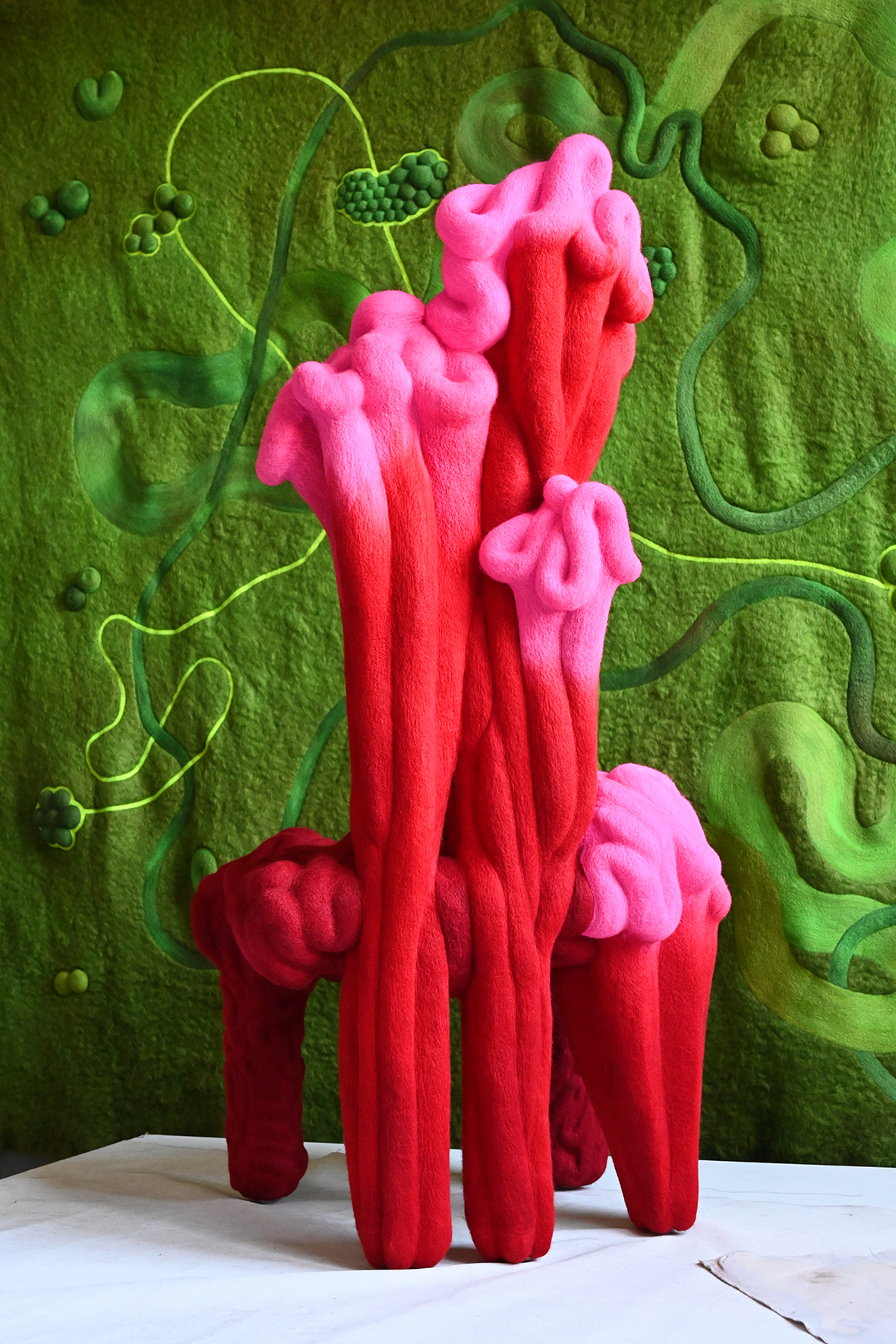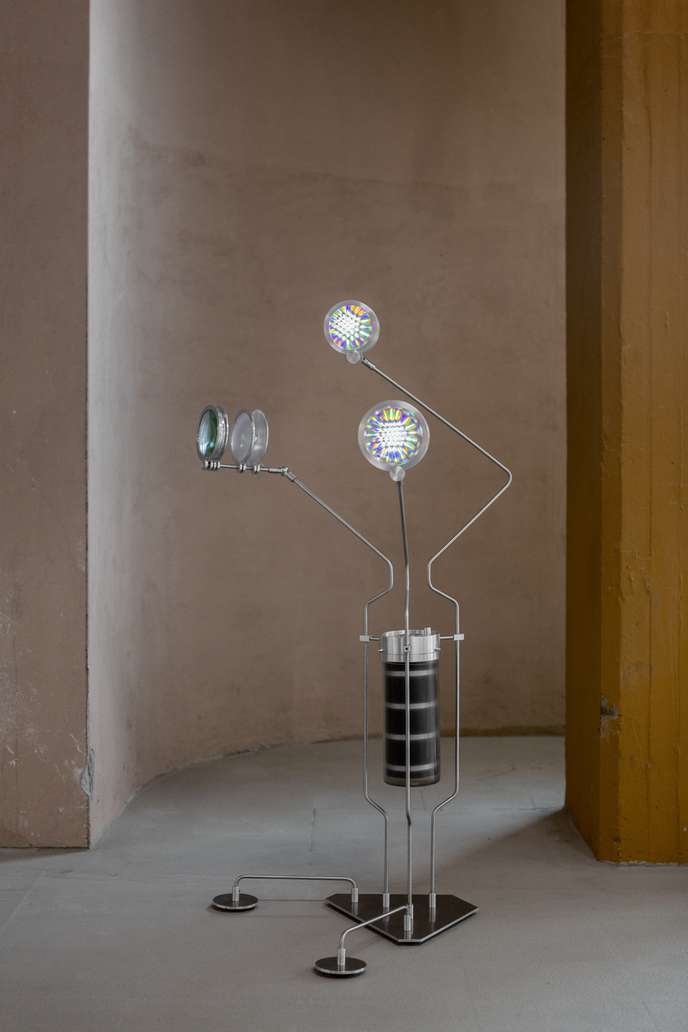crocheted membrane
‘Crocheted Membrane’ experiments with creating a momentary fiction through fashion artifacts. Starting with the physical needs of one individual human body in an outdoor temperature of 10 degrees Celsius, seven hand-crocheted body forms were produced. The clothing’s texture got thinner or opened up completely on areas of the body that needed less warmth and were thicker where warmth was lacking. In this way, a fundamental change in the aesthetic and function of clothes was displayed. Fixed forms, such as trousers, were recreated into new, unique body forms. Instead of one uniform surface, the textures became alive and inimitable. “Her concept of clothing does not derive in the same way as most fashion design, from shape or historically patterned form with embedded social hierarchy and material richness, but is instead determined by the needs and sensations of the human body – performing in the same way that bacteria populations individually respond.” (Villeré 2014) The resulting fictional artifacts illustrate how we could use knowledge about our unique bacteria population to create a novel layer.


















